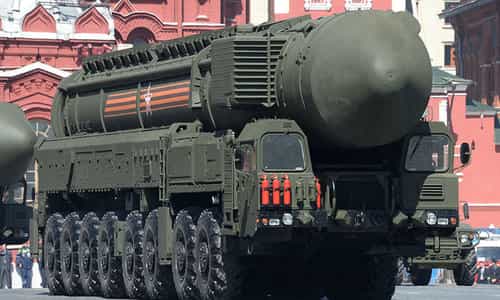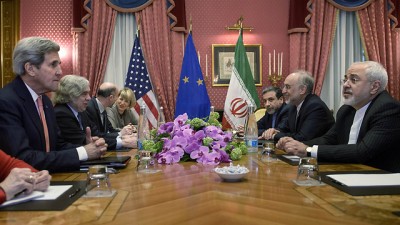7 Facts That Show the American Dream Is Dead
The key elements of the American dream are unreachable
for all but the wealthiest.
By Richard Eskow
/ AlterNet
October 22, 2014
A recent poll
showed that more than half of all people in this country don’t believe
that the American dream is real. Fifty-nine percent of those polled in June agreed that “the American dream has become impossible for most people to achieve." More and more Americans believe there is “not much opportunity” to get ahead.
The
public has reached this conclusion for a very simple reason: It’s true.
The key elements of the American dream—a living wage, retirement
security, the opportunity for one's children to get ahead in life—are
now unreachable for all but the wealthiest among us. And it’s getting
worse. As inequality increases, the fundamental elements of the American
dream are becoming increasingly unaffordable
for the majority. Here are seven ways the American dream is dying.
1. Most people can’t get ahead financially.
If the American dream means a reasonable rate of income growth for working people, most people can’t expect to achieve it.
As Ben Casselman observes at fivethirtyeight.com,
the middle class hasn’t seen its wage rise in 15 years. In fact,
the
percentage of middle-class households in this nation is actually
falling. Median household income has fallen since the financial crisis
of 2008, while income for the wealthiest of Americans has actually
risen.
Thomas Edsall wrote in the New York Timesthat “Not
only has the wealth of the very rich doubled since 2000, but corporate
revenues are at record levels.” Edsall also observed that, “In 2013, according to Goldman Sachs, corporate profits rose five times faster than wages.”
2. The stay-at-home parent is a thing of the past.
There
was a time when middle-class families could lead a comfortable
lifestyle on one person’s earnings. One parent could work while the
other stayed home with the kids.
Those days are gone. As Elizabeth Warren and co-author Amelia Warren Tyagi documented in their 2003 book, The Two-Income Trap,
the increasing number of two-earner families was matched by rising
costs in a number of areas such as education, home costs and
transportation.
These cost increases, combined with wage
stagnation, mean that families are struggling to make ends meet—and that
neither parent has the luxury of staying home any longer.
In fact,
parenthood has become a financial risk. Warren
and Tyagi write that
“Having a child is now the single best predictor that a woman will end
up in financial collapse.” This book was written over a decade ago;
things are even worse today.
3. The rich are more debt-free. Others have no choice.
Most
Americans are falling behind anyway, as their salary fails to keep up
with their expenses. No wonder debt is on the rise. As Joshua Freedman and Sherle R. Schwenninger
observe in a paper for the New America Foundation, “American
households… have become dependent on debt to maintain their standard of
living in the face of stagnant wages.”
This
“debt-dependent economy,” as Freedman and Schwenninger call it, has
negative implications for the nation as a whole. But individual families
are suffering too.
Rani Molla of the Wall Street Journal notes
that “Over the past 20 years the average increase in spending on some
items has exceeded the growth of incomes. The gap is especially poignant
for those under 25 years old.”
There are increasingly two classes of Americans: Those
who are taking on additional debt, and the rich.
4. Student debt is crushing a generation of non-wealthy Americans.
Education
for every American who wants to get ahead? Forget about it. Nowadays
you have to be rich to get a college education; that is, unless you want
to begin your career with a mountain of debt. Once you get out of
college, you’ll quickly discover that the gap between spending and
income is greatest for people under 25 years of age.
Education, as Forbescolumnist Steve Odland
put it in 2012, is “the great equalizer… the facilitator of the
American dream.” But at that point college costs had risen 500 percent
since 1985, while the overall consumer price index rose by 115 percent.
As of 2013, tuition at a private university was projected to cost nearly $130,000 on average over four years, and that’s not counting food, lodging, books, or other expenses.
Public
colleges and universities have long been viewed as the get-ahead option
for all Americans, including the poorest among us. Not anymore. The
University of California was once considered a national model for free,
high-quality public education, but today tuition at UC Berkeley is
$12,972 per year. (It was tuition-free until Ronald Reagan became
governor.) Room and board is $14,414. The total cost of on-campus
attendance at Berkeley, including books and other items, is estimated to
be $32,168.
The California story has been repeated across the country, as state cutbacks
in the wake of the financial crisis caused the cost of public higher
education to soar by 15 percent in a two-year period. With a median
national household income
of $51,000, even public colleges are quickly
becoming unaffordable. Sure, there are still some scholarships and
grants available. But even as college costs rise, the availability of
those programs is falling, leaving middle-class and lower-income
students further in debt as out-of-pocket costs rise.
5. Vacations aren’t for the likes of you anymore.
Think you’d like to have a nice vacation? Think again. According to a 2012 American Express survey,
Americans who were planning vacations expected to spend an average of
$1,180 per person. That’s $4,720 for a family of four. But then, why
worry about paying for that vacation? If you’re unemployed, you can’t
afford it. And even if you have a job, there’s a good chance you won’t
get the time off anyway.
As the Center for Economic and Policy Research
found in 2013, the United States is the only advanced economy in the
world that does not require employers to offer paid vacations to their
workers. The number of paid holidays and vacation days received by the
average worker in this country (16) would not meet the statutory minimum
requirements in 19 other developed countries, according to the
CEPR. Thirty-one percent of workers in smaller businesses had no paid
vacation days at all.
The CEPR also found that 14 percent of employees at larger corporations also received no paid vacation days. Overall, roughly one in four working Americans gets no vacation time at all.
Rep. Alan Grayson, who has introduced the Paid Vacation Act, correctly notes that the average working American now spends 176 hours more per year on the job than was the case in 1976.
Between the pressure to work more hours and the cost of vacation, even people who do get vacation time—at least on paper—are hard-pressed to take any time off. That’s why 175 million vacation days go unclaimed each year.
6. Even with health insurance, medical care is increasingly unaffordable for most people.
Medical care when you need it? That’s for the wealthy.
The
Affordable Care Act was designed to increase the number of Americans
who are covered by health insurance. But health coverage in this country
is the worst of any highly developed nation—and that’s for people who
have health insurance.
Every year the Milliman actuarial firm
analyzes the average costs of medical care, including the household’s
share of insurance premiums and out-of-pocket costs, for a family of
four with the kind of insurance that is considered higher quality
coverage in this country: a PPO plan which allows them to use a wider
range of healthcare providers.
Even as overall wealth in this
country has shifted upward, away from middle-class families, the cost of
medical care is increasingly being borne by the families themselves. As
the Milliman study shows,
the employer-funded portion of healthcare costs has risen 52 percent
since 2007, the first year of the recession. But household costs have
risen by a staggering 73 percent, or 8 percent per year, and now average
$9,144. In the same time period, Census Bureau figures show that median
household income has fallen 8 percent.
That means that household healthcare costs are skyrocketing even as income falls dramatically.
The
recent claims of “lowered healthcare costs” are misleading. While the
rate of increase is slowing down, healthcare costs are continuing to
increase. And the actual cost to working Americans is increasing even
faster, as corporations continue to maximize their record profits by
shifting healthcare costs onto consumers. This shift is expected to
accelerate as the result of a misguided provision in the Affordable Care Act which will tax higher-cost plans.
According
to an OECD survey, the number of Americans who report going without
needed healthcare in the past year because of cost was higher than in 10 comparable countries.
This was true for both lower-income and higher-income Americans,
suggesting that insured Americans are also feeling the pinch when it
comes to getting medical treatment.
As inequality worsens, wages
continue to stagnate, and more healthcare costs are placed on the backs
of working families, more and more Americans will find medical care
unaffordable.
7. Americans can no longer look forward to a secure retirement.
Want
to retire when you get older, as earlier generations did, and enjoy a
secure life after a lifetime of hard work? You’ll get to… if you’re
rich.
There was a time when most middle-class Americans could work
until they were 65 and then look forward to a financially secure
retirement. Corporate pensions guaranteed a minimum income for the
remainder of their life. Those pensions, coupled with Social Security
income and a lifetime’s savings, assured that these ordinary Americans
could spend their senior years in modest comfort.
No longer. As we
have already seen, rising expenses means most Americans are buried in
debt rather than able to accumulate modest savings. That’s the main
reason why 20 percent of Americans who are nearing retirement age haven’t saved for their post-working years.
Meanwhile,
corporations are gutting these pension plans in favor of far less
general programs. The financial crisis of 2008, driven by the greed of
Wall Street one percenters, robbed most American household of their
primary assets. And right-wing “centrists” of both parties, not
satisfied with the rising retirement age which has already cut the
program’s benefits, continue to press for even deeper cuts to the
program.
One group, Natixis Global Asset Management,
ranks the United States 19th among developed countries when it comes to
retirement security. The principal reasons the US ranks so poorly are
1) the weakness of our pension programs; and 2) the stinginess of our
healthcare system, which even with Medicare for the elderly, is far
weaker than that of nations such as Austria.
Economists used to
speak of retirement security as a three-legged stool. Pensions were one
leg of the stool, savings were another and Social Security was the
third. Today two legs of the stool have been shattered, and anti-Social
Security advocates are sawing away at the third.
Conclusion
Vacations;
an education; staying home to raise your kids; a life without crushing
debt; seeing the doctor when you don’t feel well; a chance to retire:
one by one, these mainstays of middle-class life are disappearing for
most Americans. Until we demand political leadership that will do
something about it, they’re not coming back.
Can the American
dream be restored? Yes, but it will take concerted effort to address two
underlying problems. First, we must end the domination of our electoral
process by wealthy and powerful elites. At the same time, we must begin
to address the problem of growing economic inequality. Without a
national movement to call for change, change simply isn’t going to
happen.
Richard (RJ) Eskow is a blogger and writer, a former Wall Street executive, a consultant, and a former musician.




